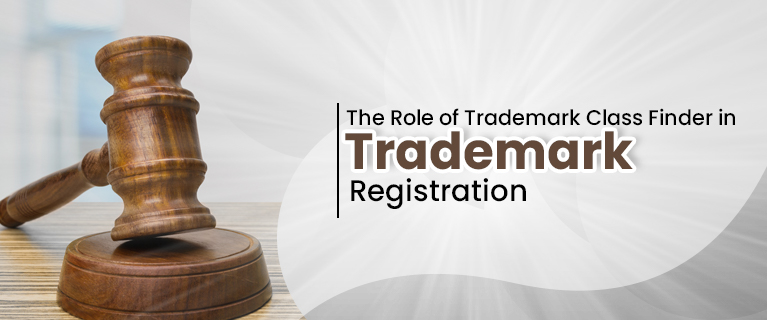The evolution of technology has significantly impacted various aspects of our lives, including the legal landscape. In the realm of intellectual property, the role of technology, particularly trademark class finder tools, has become increasingly vital. This comprehensive guide explores the development of trademark class finder technology, its current importance in international trademark registration, and predictions for its future.
Introduction to Trademark Class Finder Technology:
The trademark class finder plays a pivotal role in simplifying the intricate process of international trademark registration. Developed through advancements in artificial intelligence and big data, this technology assists businesses in navigating the complexities of trademark registration by efficiently searching and categorizing trademarks. The international classification system, rooted in the Nice Agreement—an international treaty standardizing the classification of goods and services—provides the foundation for the trademark class finder.
Read also this -: How to Register your Business Trademark in Canada
Importance of Trademark Classes in India:
In India, the trademark registration process aligns with the Nice Classification system, making it imperative to ascertain the appropriate class for goods or services during registration. Trademark classes serve several crucial purposes in the Indian context:
1. Clear Identification:
– The Nice Classification system, followed by India, categorizes goods and services into 45 classes. This systematic approach aids in precisely identifying and organizing trademarks based on the nature of the products or services they represent. Each class represents a distinct category, facilitating a more streamlined and efficient trademark registration process.
2. Avoiding Conflicts:
Trademark classes play a pivotal role in minimizing conflicts and confusion in the market. By categorizing goods and services into specific classes, the trademark registration authorities can easily assess the uniqueness of a proposed trademark within its designated class. This not only prevents similar trademarks from coexisting within the same class but also helps in avoiding disputes and potential legal challenges.
3. Protection Strategy:
Businesses benefit significantly from understanding and strategically utilizing trademark classes. By registering their trademarks in the relevant classes that accurately represent their products or services, companies can create a robust protection strategy. This ensures that their trademarks are shielded against infringement, dilution, or unauthorized use within the specific categories where they operate. A well-crafted protection strategy enhances the legal standing of a trademark owner.
4. International Registration:
The importance of trademark classes extends beyond national borders, especially when businesses aim for international protection. When using the Madrid System for International trademark registration, specifying the correct classes is crucial. This harmonizes the registration process across multiple countries, as each country recognizes and classifies goods and services based on the Nice Classification system. Accurate classification enhances the chances of successful registration and ensures consistency in protection across diverse jurisdictions.
In summary, trademark classes in India serve as a fundamental framework for a systematic and efficient trademark registration process. They not only provide clarity and organization but also contribute to conflict avoidance, strategic protection, and seamless international registration. Businesses that grasp the nuances of trademark classes can navigate the registration landscape more effectively, safeguarding their intellectual property rights.
Trademark Classification of Goods and Services
The Nice Classification system comprises 45 classes, with the first 34 classes covering goods and the remaining 11 covering services. A brief overview of some goods classes includes:
Class 1: Chemicals used in various industries.
Class 9: Scientific and technological apparatus, including computers and telecommunications equipment.
Class 18: Leather and imitations of leather, bags, wallets, and umbrellas.
Class 25: Clothing, footwear, and headgear.
Services are also categorized into classes, such as:
Class 35: Advertising, business management, and business administration services.
Class 42: Scientific and technological services, research, and design services.
Class 44: Medical, veterinary, and agricultural services.
Evolution of Trademark Class Finder Technology:
Trademark class finder technology simplifies the international trademark registration process by utilizing algorithms to categorize trademarks into 45 different classes based on the type of product or service. Predictions for the future indicate continuous improvement, with advancements in artificial intelligence and big data contributing to increased accuracy and efficiency. The technology may become more user-friendly and accessible to businesses of all sizes, particularly with the expanding influence of e-commerce and online marketplaces.
Read also this -: Why do you need USA Trademark Registration
Impact of Artificial Intelligence and Big Data:
Artificial intelligence has revolutionized trademark class finder technology by analyzing vast amounts of data, identifying patterns, and categorizing trademarks accurately. This has led to increased efficiency and accuracy in the trademark registration process. Big data, with its ability to analyze large datasets and identify intricate patterns, has further streamlined the Trademark Registration process. However, it is essential to acknowledge the current limitations of trademark class finder technology.
Limitations of Current Trademark Class Finder Technology:
While trademark class finder technology has significantly improved the efficiency of trademark registration, it faces certain limitations:
1. Keyword Reliance: The technology relies on user-entered keywords, which may not always capture the full complexity of certain products or services.
2. New Product Challenges: Products without an established class may cause delays in the registration process, requiring a more adaptable approach.
3. Cross-Border Inconsistencies: Inconsistent cross-border registration may occur due to differences in classification standards between countries.
4. Non-Traditional Trademarks: Non-traditional trademarks, such as sound or scent marks, may require a specialized approach beyond the capabilities of current technology.
5. Balancing Technology and Human Expertise: Overreliance on technology neglects the nuanced expertise of human professionals in the trademark registration process.
Importance of User Experience:
User experience is paramount in trademark class finder technology. Ensuring that the technology is user-friendly and comprehensive is essential for businesses to efficiently register their trademarks. User feedback plays a crucial role in identifying areas for improvement, maintaining the relevance and effectiveness of the technology.
Benefits of Trademark Class Finder in International Trademark Registration:
Trademark class finder technology offers several benefits in the international trademark registration process:
1. Correct Classification Identification: The Trademark Class Finder assists in accurately identifying the appropriate classification of goods or services for your trademark. In international trademark registration, each product or service falls into specific classes. Proper classification is crucial to avoid rejection during the application process. The tool helps ensure that your trademark is filed under the correct category, aligning with the international classification system, such as the Nice Classification.
2. Time and Effort Savings: Manual classification of goods or services can be a complex and time-consuming task. The Trademark Class Finder automates this process, streamlining the identification of relevant classes. This not only saves considerable time but also reduces the effort required to research and determine the appropriate categories for your trademark.
3. Error Reduction: Human error is inherent in manual processes, and misclassification can lead to application rejection. The Trademark Class Finder minimizes such errors by automating the classification process. Automated searches and algorithms help ensure that the chosen classes align with the specific characteristics of your goods or services. This reduction in errors contributes to more accurate and complete trademark applications, enhancing the likelihood of successful registration.
4. International Standards Compliance: The technology used in Trademark Class Finder ensures that your trademark applications comply with international standards. This is particularly important in the context of the Nice Classification system, which provides a standardized framework for the classification of goods and services on a global scale. Compliance with these standards facilitates the use and recognition of your trademark in multiple countries, streamlining the International Trademark Registration process and supporting a broader scope of protection.
Read also this -: How to Register a Trademark Internationally
Legal Considerations in Trademark Class Finder Technology:
Legal considerations are paramount in the development and use of trademark class finder technology:
1. Trademark Rights Violation: Technology must not violate the trademark rights of others.
2. Accuracy and Reliability: The technology must maintain accuracy and reliability to avoid legal issues in the registration process.
3. Privacy and Security: Ensuring the privacy and security of user data is essential to comply with legal standards.
Conclusion
Trademark classes are a crucial component of the international trademark registration process, helping companies to efficiently identify, classify, and safeguard their products and services. Following the Nice Classification system guarantees a methodical and structured approach to trademark registration in India. Understanding the significance of trademark classes empowers businesses to avoid conflicts, protect intellectual property, and confidently navigate the International Trademark Registration process. As businesses expand globally, mastering the art of trademark class classification becomes even more critical for securing and safeguarding brand identity in the international market.


